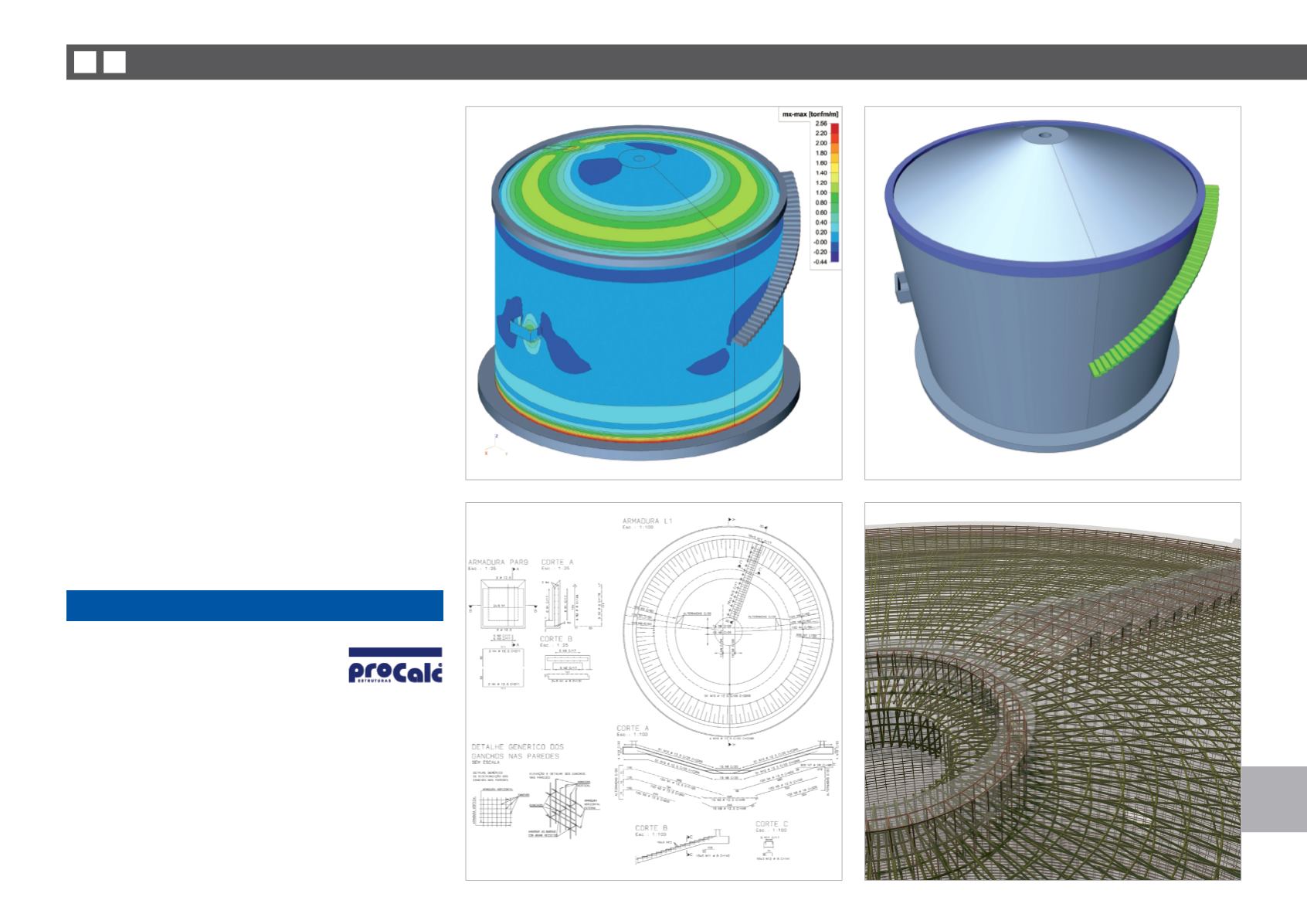
101
Category 2: Civil Structures
2
Sludge Digestor - Londrina PR, Brazil
SE
AP
Procalc
Contact
Jorge Silka
Address Rua Grã Nicco, 113, cjto 504, Mossunguê
81200-200 Curitiba, Brazil
Website
Procalc
was founded in August 1989 in Curitiba-PR, Brazil. The company
develops projects in many fields such as: residential and commercial
buildings, industry, public sector projects for environmental sanitation and
structural strengthening projects.
Procalc
benefits from vast professional
experience, which it applies as well as the best technological resources
available to create precise structural solutions combining best technique,
economy and buildability. We have already designed more than
2,500,000 m² of building structures, more than 400,000 m³ of concrete
tanks and more than 500,000 m² of industrial structures.
Owner
Companhia de Saneamento do Paraná SANEPAR
General Contractor
Companhia de Saneamento do Paraná SANEPAR
Engineering Office
Proensi Projeto e Engenharia de Sistemas
The
Digester
is a semi-buried structure. The underside of the bottom slab
is found at 9.5 m below ground. The internal diameter is 20 m and it has a
height of 19.1 m. The bottom slab is 40 cm thick and has a conical shape.
Alongside the external circular wall, the bottom slab has its thickness
enhanced to 80 cm, forming a 100 cm cantilever projection over the face
of the wall. This cantilever reduces the contact pressure between structure
and ground underneath the walls. The external walls are 40 cm thick and
14.50 m high. There are circular stairs, 20 cm thick, cantilevering from the
wall. The whole structure has been designed in reinforced concrete.
The structure was modelled in
SCIA Engineer
and the results (stresses,
areas of steel reinforcement and tensions) were taken from this model.
After some iteration, we found the definite model that gave us the
parameters for designing and detailing of the structure. According to the
diagrams the maximum stress on the ground was 2.20 kgf/cm².
From the analysis information obtained in SCIA Engineer, the design
was created using Eurocodes along with the application of some criteria
given by NBR 6118. The critical elements were verified in both codes. The
software
Allplan Engineering
was used to produce the 3D model and
drawings of all concrete elements of the structure, including reinforcement
drawings.


